Leverage synergies, combine efforts and reduce the fragmentation within DRR and CCA domains, including addressing multi-level governance and different spatial and temporal scales.
Promote multi-risk thinking, by means of a novel transdisciplinary multi-risk governance framework related to climate extremes (RISK-TANDEM) aimed at assessing, evaluating, managing and communicating multi-hazard, multi-risk issues in close collaboration with engaged stakeholders, practitioners and concerned citizens.
Exploit the power of open data and open science, improving capabilities (e.g. using a flexible Data Fabric architecture) to make use of scattered information for more effective decisions, including knowledge and tools developed within past, present and future research and innovation initiatives.
New Horizon Europe Project, set to improve climate disaster risk management across multiple civil authorities and first responders in Europe
Summary points:
€5.2 Million Horizon Europe Project (Directed) aims to improve the interoperability of multiple European climate risk assessment and planning tools and bring them together in a manageable system (a data fabric) that enables better disaster risk assessment and management by European disaster protection authorities and first responders.
Using ‘Real World Labs’ to critically analyse and improve current work-flows and governance linked to disaster risk management and disaster risk reduction.
Promoting a multi-risk perspective on climate change adaptation by considering the impacts of floods, droughts, heatwaves, forest fires and storms.


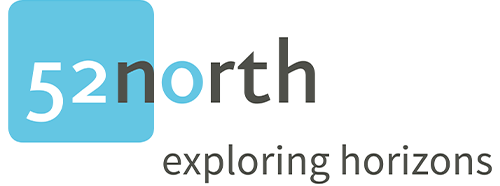
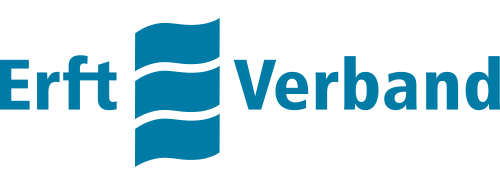

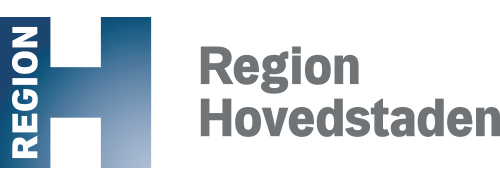

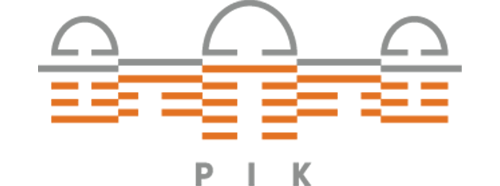
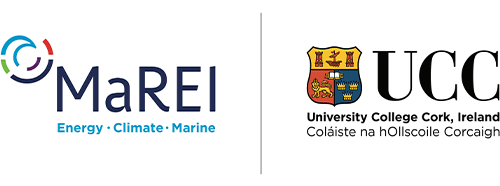
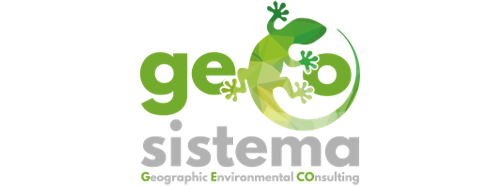

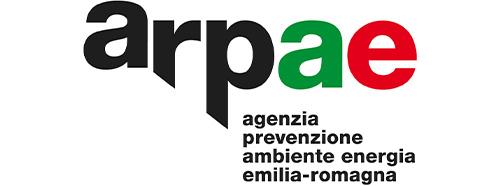
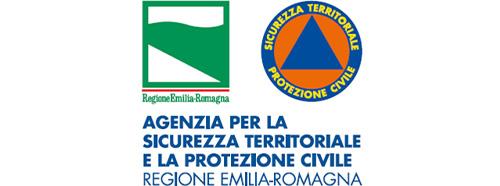





Floods
Pluvial flooding is projected to increase in most parts of Europe. An increasing trend in fluvial flooding as been observed and is projected to further increase in Western and Central Europe.
Droughts
Western, Central and Southern Europe are projected to experience an increase in hydrological, agricultural and ecological droughts under global warming scenarios.
Heatwaves
The frequency and intensity of heatwaves, have increased in recent decades in Europe and are projected to keep increasing regardless of the greenhouse gas emissions scenario.

Forest fires
Fire promoting weather conditions are projected to increase in Eastern and Southern Europe by the middle of the century under a 2 °C global warming scenario.

Storms
Sever wind storms are projected to increase in Northern Europe at global warming of 2 °C and above.
A new €5.2 Million Horizon Europe Project, ‘Disaster Resilience for Extreme Climate Events providing Interoperable Data, Models, Communication and Governance (DIRECTED) Project’ was launched on the 29th & 30th November in Braunschweig, Germany and is set to revolutionize the governance and management of climate disasters across multiple civil society and emergency agencies. Physical, social and data scientists are coming together from across Europe with local authorities and first responders to design a new integrated system (a data fabric) that will bring together multiple climate risk assessment tools, disaster warning systems and disaster communication and organisation into one manageable system for use by on-the-ground disaster managers.
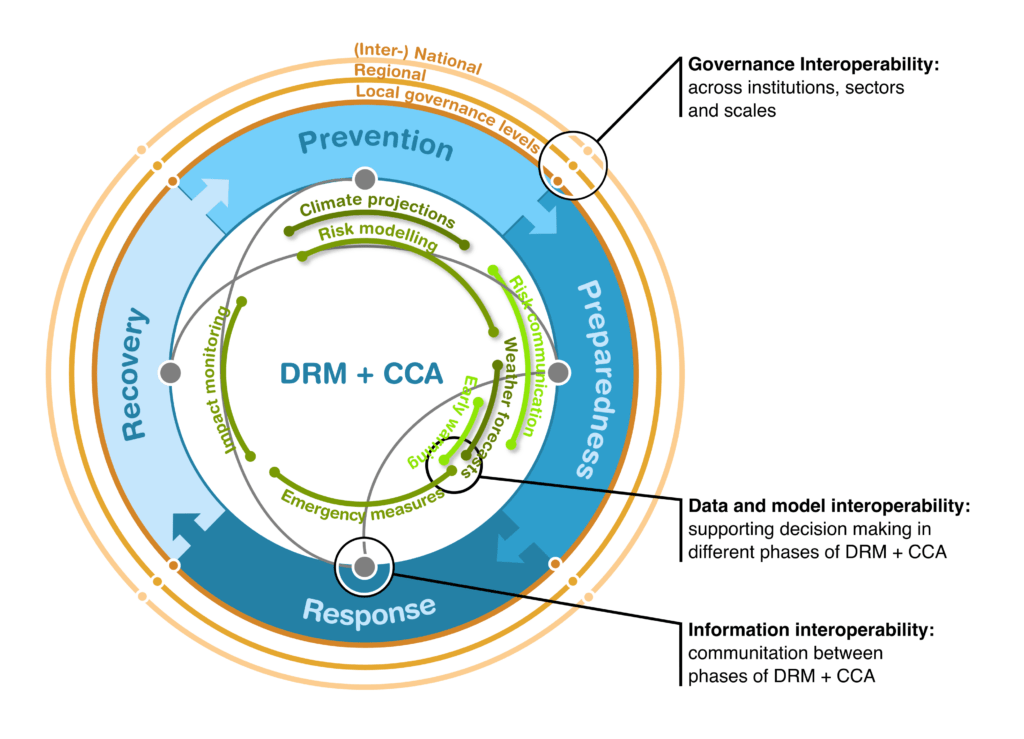
Four regional and municipal clusters from the Capital Region of Denmark, the Danube Region, Emilia Romagna Region, Italy and the Rhine-Erft District, Germany are coming together with academic researchers and specialist SME’s from the Technical University of Braunschweig (TUB), ETH Zurich, Danish Technical University (DTU), Potsdam Institute for Climate Impact Research (PIK), German Research Centre for GeoScience (GFZ), University College Cork (UCC), Institute for Advanced Sustainability Studies (IASS), International Institute for Applied Systems Analysis (IIASA), Stockholm Environment Institute, Oxford (SEI), 52 North Spatial Information Research, GECOSistema, Genillard & Co and Oasis Hub to participate in ‘Real World Labs’ analysing on-the-ground practices, governance and systems of multiple disaster practitioners involved in climate change adaptation and disaster management.

The collaboration is a rare opportunity to share disaster risk management practices and problems to enable more efficiencies across disaster protection networks to improve information flow and ability to respond to extreme climate events by providing tailored information to the many agencies involved in large scale disasters and disaster planning.
As well as designing the data fabric, the group will look at how to make multiple climate disaster assessment & planning tools ‘interoperable’ with each other, thus further enabling their functionality to enhance climate disaster risk assessment and on the ground planning for prevention, preparedness, response and recovery.
In addition, social scientists will be drawing out how multiple agencies involved in preparing for any major climate emergency can better improve their joint working and understand the disaster authorities and first responders needs for relevant data to manage complex climate disaster risk assessment and resilience planning. The project team will also look at how work silos and communication bottlenecks at the many different levels of administration can be overcome to facilitate cooperation for more efficient disaster management in the future.
[This project is an Innovation Action under the Civil Security for Society, Disaster-Resilient Societies Programme of Horizon Europe funded by the European Union. Project details and a full list of participant organisations can be found on the link: https://cordis.europa.eu/project/id/101073978. Associate partners SEI Oxford and Oasis Hub are funded by Innovate UK and ETH Zurich is funded by The State Secretariat for Education, Research and Innovation (SERI), Switzerland]





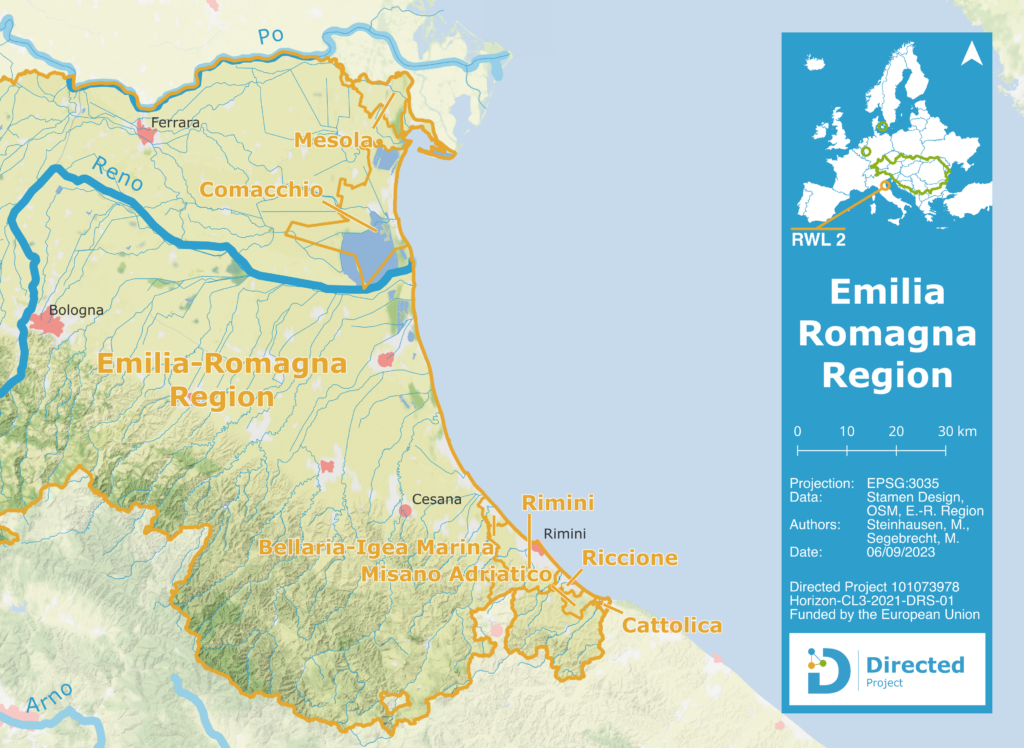
General information
The Real World Lab in Emilia-Romagna is led by the Territorial Safety and Civil Protection Agency of the Emilia-Romagna Region (ARSTPC-ER) together with the ARPAE Hydrometeo Service Civil Protection Functional Centre who are responsible for Disaster Risk Reduction (DRR) related to climate risks. This includes early warning, Disaster Risk Management (DRM) systems and Climate Change Adaption (CCA) planning. The Real World Lab is focused on marine ingression, windstorm risk and wildfire risk. The area of Rimini coast, where marine ingression and windstorm risk are the centre of research, covers the coastal strip of the province of Rimini, including the municipalities of Bellaria-Igea marina, Rimini, Riccione, Misano adriatico and Cattolica. The study area for wildfire risks includes two municipalities of the Ferrara Province, Comacchio and Mesola, located on the coast of Ferrara province.
Challenges
The coastal strip of Rimini is a densely urbanized territory, with inhabited centers that have developed near the coast to compose a real „linear city“ about 30 km long, the whole territory has a strong tourist vocation linked in particular to the seaside sector and to the use of the low sandy beaches that characterize the entire regional coast. The population of the 5 municipalities along the coast goes from around 200,000 inhabitants in winter to over 800,000 in the summer. Severe weather events have caused serious impacts on the coastal sector in Rimini Region with significant damage caused by marine ingression and destruction of beaches due to erosion and windstorms. The territory is also subject to other types of hazards particularly heavy rains (water bombs) which can undermine urban drainage causing widespread flooding. Impacts can be increased with high sea levels and storm surge events.
The municipal territory of Comacchio is known for its seven beaches, distributed in large beaches along the coast. There are large areas of mixed forests, such as the Po di Volano Nature Reserve, located along the northern part of the coast between Volano and Lido di Volano, of coniferous woods such as the one immediately north of the Lido delle Nazioni and of deciduous woods such the one present west of the town of San Giuseppe.
The Municipality of Mesola has an area of 84.31 km2; is a town in the Po Delta, in the southern branch called Po di Goro, that spans the municipal and regional border between Veneto and Emilia-Romagna. Wooded areas are mostly located in the coastal zone.
For both the Municipalities the wildfire risk is accentuated in the summer during which the low rainfall and high attendance of these areas increases the likelihood of fire. Statistical data shows that:
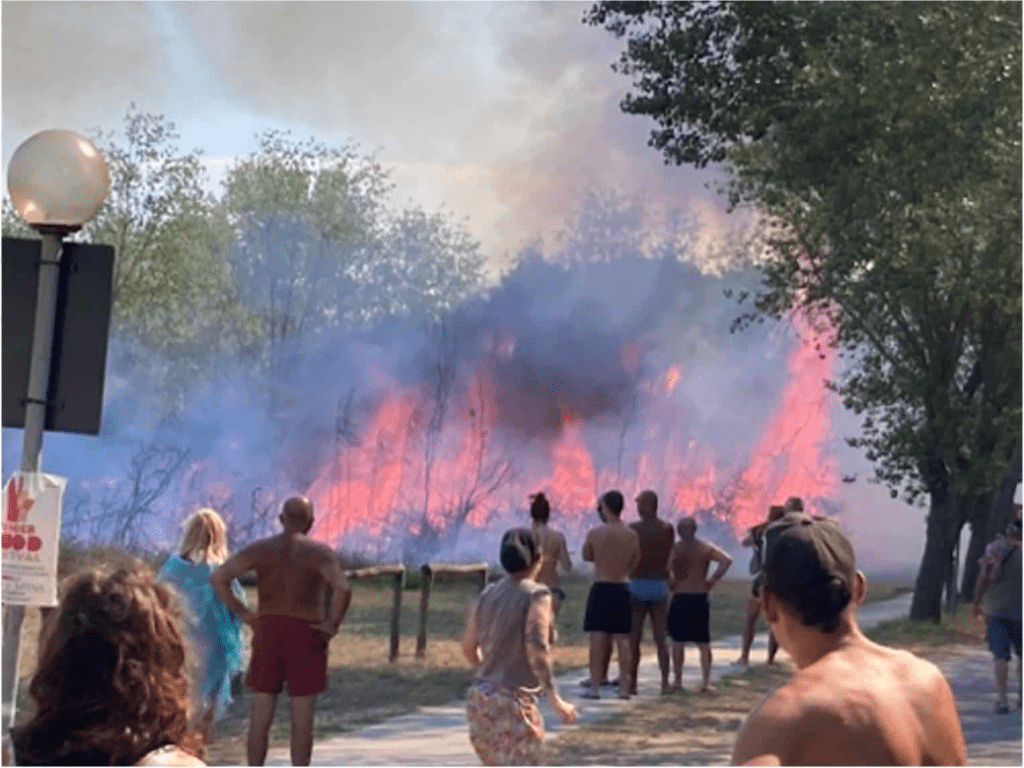

Expected outcomes
What has been done so far
Together with the Territorial Safety and Civil Protection Agency of the Emilia-Romagna Region an initial stakeholder mapping was carried out. The stakeholders engaged were invited to the first RWL Meeting, organized in Bologna on 21 March 2023, with roughly 40 participants in presence and online. In this context DIRECTED has been presented, introducing it to stakeholders in the lab, getting preliminary feedback on data, tools, policies, and models for DRR and CCA and gaining first insights into users’ practical interests in the project, in a roundtable discussion. After this first introductory activity a second meeting in-person with stakeholders has been organized in September 2023, to focus on governance processes as well as available data, networks, models, and tools. An in-depth webinar on data and tools was organized on 20th November 2023.
Notably, after the first meeting an extreme flood occurred in the region in May 2023 refocusing de facto for months all the activities of the lab as most participants were involved in emergency and post event recovery actions. Besides that, the event offered a unique opportunity to test the SaferPlaces platform, one of the tools provided by DIRECTED for supporting real-time emergency management and post event operation of the Territorial Safety and Civil Protection Agency.
During the past year the work in RWL 2 exemplified the project’s strategic shift from conceptual frameworks to practical, on-the-ground implementation. This was achieved through a structured sequence of activities anchored by two large-scale civil protection exercises. These practical demonstrations were underpinned by a continuous, iterative cycle of co-production, in which stakeholder needs identified in targeted workshops (e.g., the Mesola wildfire workshop) were directly translated into technical specifications during dedicated co-design sessions for the Data Fabric.





General Information:
Real World Lab 3, spearheaded by Genillard & Co, a Munich-based consulting and reinsurance brokerage firm specializing in risk management strategies for specialty insurance markets, collaborates with contributors from the Potsdam Institute for Climate Impact Research and Zala Special Rescue. Zala Special Rescue, the Hungarian partner of UN INSARAG, represents a first responder organization comprising civilian volunteers with nationwide coverage. This collaboration focuses on disaster preparedness and climate change mitigation measures within the expansive Danube River Basin (DRB), specifically analyzing the city of Vienna in Austria and the Zala Region in Hungary.
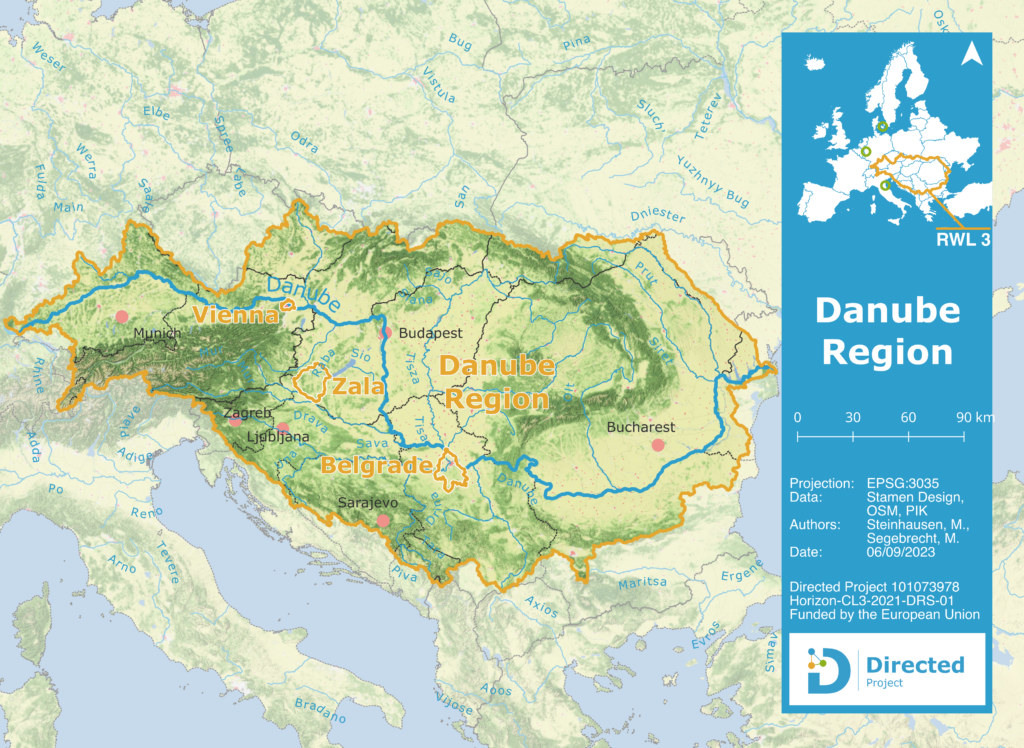


Challenges:
The DRB spans 19 countries, encompassing 81 million people over just over 800,000 km², rendering it the world’s most international river basin. Recent studies indicate that climate change has significantly impacted the frequency and severity of hydroclimatic extremes in the Danube basin, challenging existing risk mitigating measures for built-up areas, industry, infrastructure, and agricultural land. Various natural disasters, including droughts, floods, and forest fires, have caused severe economic and ecological damage. Due to the vast size and heterogeneous characteristics of the DRB, no universal disaster prevention solution can be prescribed to local actors. A diversity of private and public entities seeks advanced technologies and data for risk assessment and long-term adaptation. As the Danube region is transboundary, Disaster Risk Reduction (DRR) must be coordinated across different administrative levels. To achieve this, basin-wide assessments and scientific results must be considered on a site-specific basis and communicated effectively to local institutions. Regular civil protection exercises are deemed indispensable.
Expected outcomes:
In the past decade, advanced tools utilizing state-of-the-art models and new datasets have been developed to detect imminent natural disasters in the Danube basin and predict susceptibility to long-term impacts of climate change. The Danube Model (DM) stands out as particularly suitable for long-term risk assessment in the Danube catchment. The project aims to enhance the functionality of the DM, enabling comprehensive flood event modeling and soon incorporating drought scenario modeling. Collaborative efforts among hydrologists, modelers, and programmers within the project extend beyond the DM, enhancing the functionality of all selected flood and damage models. The overarching objective is to develop a tool capable of representing short-, medium-, and long-term natural hazards and damage expectations within the DRB.
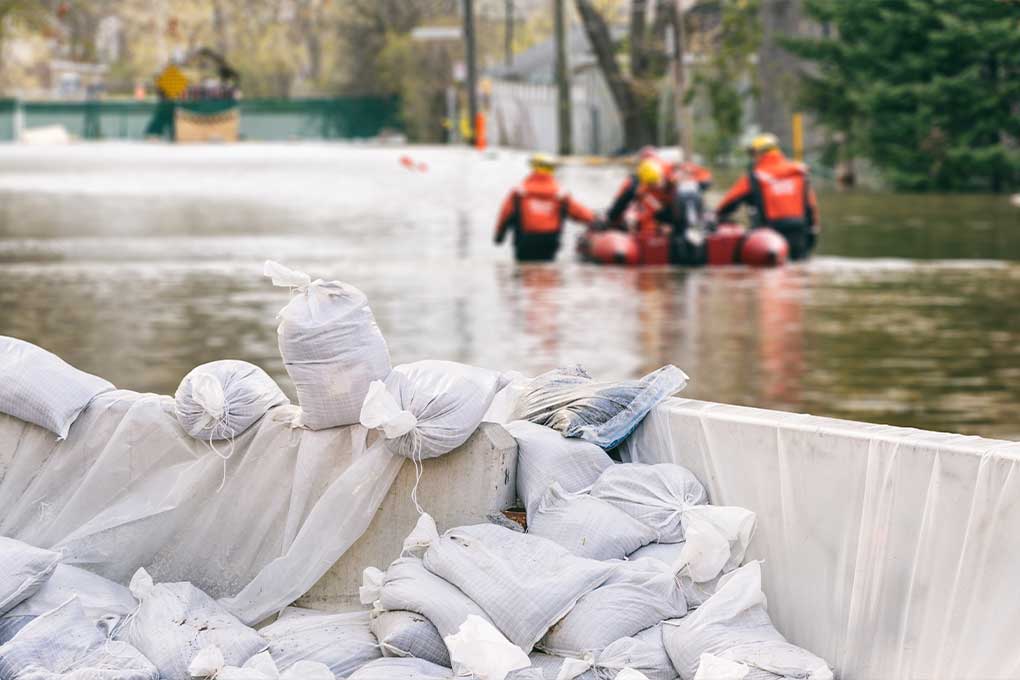
Beyond hazard detection, emphasis is placed on the appropriate handling of emerging natural disasters, including effective risk communication and frequent training. The project evaluates and improves short-term immediate measures as well as medium- to long-term preventive and protective measures. Stakeholders from diverse sectors, including practitioners, civil defense organizations, regional authorities, and private sector members from rural communities, are actively engaged. Recognition and collaboration for disaster risk reduction and climate change adaptation are facilitated, with numerical tools being made interoperable to enhance transparency and accessibility of information on extreme events. Long-term outcomes include active partnerships between public administration and private institutions, contributing to Disaster Risk Reduction (DRR) and Climate Change Adaptation (CCA) strategies. The integrated risk governance framework, Risk-Tandem, is anticipated to leverage synergies, strengthen community engagement, promote multi-risk thinking, and facilitate cross-border management of natural hazards and risks.
What has been done so far
Stakeholders from diverse sectors have been actively engaged through various communication means, including email correspondence, video calls, and in-person meetings. The work within the Risk and Water Level initiative commenced with a foundational analysis of disaster management structures, specifically focusing on understanding the potential impacts of climate change at the national level in Austria and Hungary. An ongoing comprehensive examination aims to clarify roles and responsibilities in the Disaster Risk Management (DRM) sector in the event of a natural catastrophe. Although this outreach is ongoing, a foundational understanding of preparedness for the consequences of climate change in Austria and Hungary has been established.
Furthermore, the DIRECTED project, along with the DM, was formally introduced at the Danube Flood Forecasting Forum in Budapest from October 10 to 12, 2023. This forum provided a platform for evaluating the capabilities of hydrometeorological modeling to support DRM and CCA in the Danube River Basin. Additionally, the event facilitated targeted recruitment of stakeholders in select Danube riparian countries, further solidifying the collaborative network of the project.
During the past year, engagement in the Vienna test site was strategically structured to address the City’s specific challenges: a highly centralized governance system, and a complex, interconnected multi-risk landscape (including fluvial flooding of the rise from the Danube River that can threaten Vienna and pluvial flash floods that are occurring more frequently). To this end, the Lab organized two workshops. In the first workshop, gaps were mapped in data access, communication chains, and timelines, while the aims of the Data Fabric and the integrated tools were positioned for operational and planning use. The second workshop presented the user stories for the Data Fabric.
The Zala test site focused on a centralised system with limited local analytical capacity and multi-hazard interactions (pluvial flash floods, land-use driven mudslides), shifting from needs collection to user-driven specifications for Data Fabric, forecasting, and education. Several Interviews on water management, forestry and limnology were conducted for knowledge exchange, always taking into account the requirements of the Data Fabric. New collaborations were established and the integration of the Data Fabric into the RWL initiated.



General Information:
The Real World Lab Rhine-Erft Region includes the districts of Euskirchen and Rhine-Erft, composing 21 municipalities in total, which are in the federal state of North Rhine-Westphalia, Germany. The entire area of the Rhine-Erft RWL is part of the ~1.900 km² large Erft river catchment. The Erft rises south of Bad Münstereifel, has a length of about 100 km and flows into the Rhine in Neuss, near Düsseldorf. The RWL is led by the Erftverband in Bergheim.
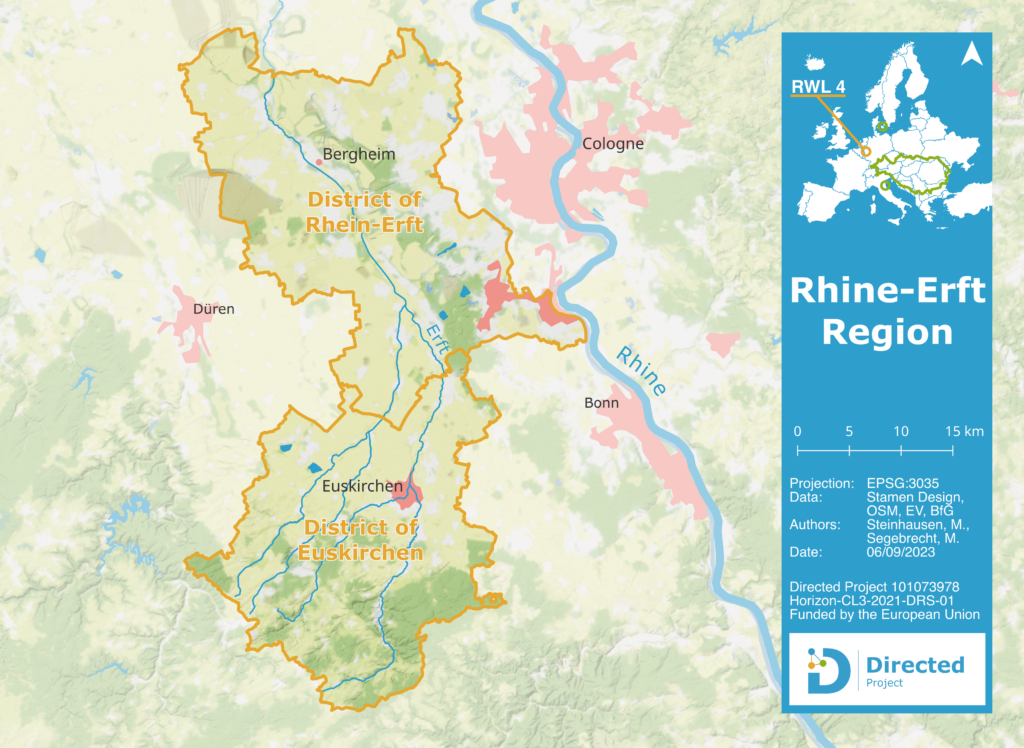
Challenges:
The Erft river catchment was among the most affected regions by the flood in July 2021. The hydrological responses to extreme rainfall (up to 180 mm within 15 hours) produced unprecedented flooding along the Erft river and its tributaries causing havoc, huge economic losses and loss of life. While the risk of intense flood events is especially high for the upper reaches, also the opposite extreme, i.e., drought risk is beginning to occur. Due to ongoing open pit mining activities and related groundwater pumping, the Erft river does not have contact to the groundwater in most parts of the lowland catchment and no baseflow can be maintained during meteorological droughts. Both hydrological extremes impose particular challenges to the communities living and working in, and managing, the Erft catchment. A major challenge is related to the question of how unprecedented floods like those in July 2021 need to be considered in flood frequency statistics, risk assessments and ultimately in flood risk management and governance. The definition of worst-case scenarios will need to consider climate change projections to derive Disaster Risk Reduction (DRR) strategies covering structural and non-structural measures. It is acknowledged that no structural measure would have been able to control the amount of runoff generated from precipitation in July 2021. Therefore, risk awareness and its communication needs significant improvements to enhance the management of flood events in the future. Learnings from past events must be accounted for in risk governance processes. Further, by the end of the 2020s the end of open pit mining will significantly change the runoff regime in the lower catchment area. Water pumped out of open pit mines currently contributes 70% of the Erft river discharge in more than one third of the catchment. In view of such structural changes, the assessment of future drought-risk is challenging and poses important requirements for integrated multi-risk governance.



Expected outcomes:
The Real World Lab (RWL) expects to enhance existing communication pathways for hydroclimatic extreme events as well as to co-develop an integrated risk-management strategy that is coordinated with relevant stakeholders from both DRR and Climate Change Adaptation (CCA) domains and citizens in the Erft catchment. In general terms the communication and the understanding among different actors in Disaster Risk Management (DRM) and CCA should be improved. From a scientific point of view, the aim is to investigate how climate-change impacts will affect the frequency and severity of future floods to obtain a robust estimation of design values for structural and non-structural measures. For this purpose, new data sources and products, e.g., seamless forecasts will be used by existing numeric flood and water resources management models. Existing hydrological models are based on the NASIM model software and can be used and further developed in the framework of the project. Moreover, we expect to get a better understanding of climate-change impacts on the Erft river. Finally, the Erft water board envisages to build capacity and become part of a lasting European RWL partnership.
What has been done so far:
The Erftverband has initialized the intermunicipal flood protection corporation (FPC) after the flood in July 2021. The aim of the FPC is to support the municipalities in the creation of flood-protection concepts and to coordinate those concepts across municipal borders. The DIRECTED project was already presented to the members of the FPC, the engagement process is still ongoing. Furthermore, the project KRITIS-Dialog, concerned with the protection of critical infrastructures through resilience governance, is involved as stakeholder in RWL 4.
To benefit from expert knowledge and previous analysis of the situation in the study area, exchanges with a range of societal stakeholders has taken place. To facilitate these exchanges, meetings on the assessment of organization and risk management strategies for flood events, as well as on hydraulic engineering, water management, and operative flood protection have taken place.
The inclusion of other districts, lying within the catchment area of the Erft, is also planned for the further development of the RWL (district of Rhein-Sieg, district of Düren and district of Rhein-Neuss). Thus, a meeting was organized where DIRECTED was presented, and first discussions were carried out. Afterwards, the representatives of the districts also received a short questionnaire which focused on their experience during and after the flood in 2021, their expectations concerning DIRECTED as well as concrete ideas for the improvement of DRM. The answers were analysed and discussed in a second meeting, which led among other outcomes to the identification of challenges within the communication pathways during natural hazards that DIRECTED will help to overcome.
During the past year RWL 4 designed a stakeholder engagement strategy to lay the groundwork for the future scalability and regional adoption of the project’s outcomes, demonstrating a proactive strategy to maximize long-term policy and societal impact. This process was structured as an iterative cycle of co-production supported by the Risk-Tandem Framework, designed to translate identified needs into concrete actions and marking a clear shift from conceptual discussions to practical implementation. Operational needs that emerged from workshops and a tabletop exercise were systematically translated into specific functional requirements for the Data Fabric ensuring the tool is not an academic exercise but is built to solve real-world problems defined by its end-users.




General Information:
Real World Lab 1 is led by the Technical University Denmark (DTU) who is a research partner in DIRECTED. RWL 1 has defined two primary study areas which are the catchment of Værebro River and Roskilde Fjord. The two areas have been chosen for several reasons; firstly, because they cover both coast and rivers, and because they have experienced significant flooding events. The catchment of Værebro Å extents over an area of 153 km2 and its mainstream is 35 km long, making it one of the longest rivers in the Capital Region of Denmark, while Roskilde Fjord features a beautiful and diverse landscape and its inlet extends 40 km into the Zealand landscape.
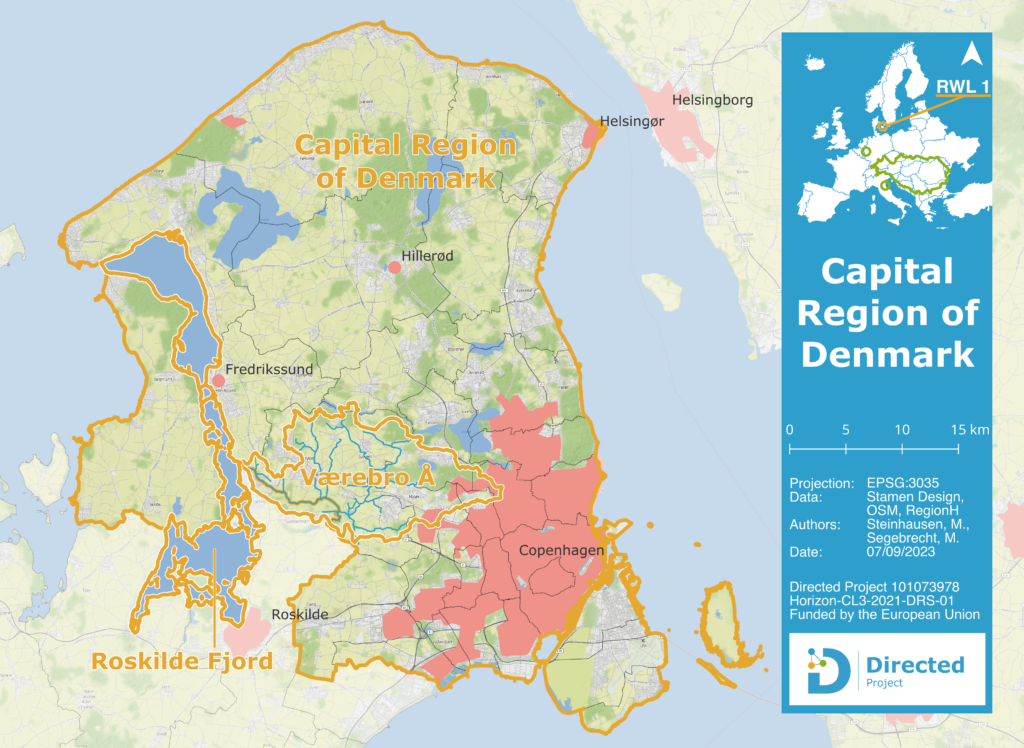
Challenges:
Copenhagen and the surrounding Capital Region of Denmark are estimated to hold some of the highest flood damage potential amongst countries bordering the Baltic Sea. Due to climate change, changed rainfall patterns combined with a heightened frequency and intensity of cloudbursts are increasingly leading to overflows from streams and sewer systems, impacting densely populated and rural areas in the region, e.g., as was the case of the 2011 cloudburst event that caused insured losses of €700M in Copenhagen. Recently drought has emerged as another critical factor to consider (e.g., 2018). The large and compound diversity of climate-related hazards combined with the exceptionally high concentration of people, valuable assets and critical infrastructure in Copenhagen and the Capital Region urgently necessitates effective and coordinated Disaster Risk Management (DRM) and Climate Change Adaption (CCA). Currently, major challenges relate to governance and policy integration, and to coordination and collaboration across municipal boundaries as the enactment, funding and planning of, e.g., climate adaptation in Denmark is carried out at the municipal level, often in collaboration with privatised water utilities, within a broad national and legal framework. In some cases, this leaves climate adaptation planning in an institutional void. Also, emergency response services are principally anchored at the municipal level. As a result, overall risk governance, impact assessment models, data availability, emergency preparedness, adaptive capacity and even community involvement and risk acceptance levels often vary across administrative borders, hindering effective Disaster Risk Reduction (DRR) of current and future pressures from climate extremes.
Climate Change Adaptation challenges:


Expected outcomes:
This Real World Lab (RWL) will employ the Risk-Tandem Framework as means of co-innovating new real-life governance strategies and robust decision-support methodologies for integrated risk reduction and improved adaptation to climate extreme events at the regional and local levels. Specifically, the RWL will use the knowledge, participatory and technical innovations from DIRECTED to reconcile the key aspects of “interoperability” that currently serves as a barrier for effective DRR. The enhanced and interoperable model and data-transformation components developed in WP 2 and WP 5 will be demonstrated and co-evaluated at different scales and levels. New and improved practices, dialogues and collaboration between first and second responders, scientific and technical communities, local policy-makers, communities and other stakeholders will be pursued in order to build lasting partnerships and direct the rapid deployment of the new innovations.
What has been done so far:
After an introduction of the DIRECTED project and its proposed work in RWL 1, stakeholders were invited to attend initial bilateral meetings. On the 3rd of March 2023 all stakeholders were invited to participate in a workshop held at the regional office of The Capital Region of Denmark. REGIONH (former partner of the project) facilitated the workshop together with DTU and supported by WP 3 and WP 4, focusing on mapping barriers and challenges in data/models, governance, and communication in both CCA and DRM.
In 2024 work continued with a more detailed mapping in the RWL to initiate further stakeholder engagement and to discuss potential solutions for better CCA and DRM. For that the second workshop simulated an extreme storm-surge scenario for Roskilde Fjord (2050) and used a prioritisation exercise to converge on high-value challenges. The third workshop took place in 2025 to present a first version of the Data Fabric, of which first Mock-ups were already reviewed in an online session. The Data Fabric was also presented during a contribution of the RWL to the “Not Just Another Tool” webinar, where the stakeholder engaged and co-creative shaping of the Data Fabric was shown.
Sie sehen gerade einen Platzhalterinhalt von OpenStreetMap. Um auf den eigentlichen Inhalt zuzugreifen, klicken Sie auf die Schaltfläche unten. Bitte beachten Sie, dass dabei Daten an Drittanbieter weitergegeben werden.
Mehr InformationenSie sehen gerade einen Platzhalterinhalt von YouTube. Um auf den eigentlichen Inhalt zuzugreifen, klicken Sie auf die Schaltfläche unten. Bitte beachten Sie, dass dabei Daten an Drittanbieter weitergegeben werden.
Mehr InformationenSie müssen den Inhalt von reCAPTCHA laden, um das Formular abzuschicken. Bitte beachten Sie, dass dabei Daten mit Drittanbietern ausgetauscht werden.
Mehr InformationenSie sehen gerade einen Platzhalterinhalt von Google Maps. Um auf den eigentlichen Inhalt zuzugreifen, klicken Sie auf die Schaltfläche unten. Bitte beachten Sie, dass dabei Daten an Drittanbieter weitergegeben werden.
Mehr InformationenSie sehen gerade einen Platzhalterinhalt von OpenStreetMap. Um auf den eigentlichen Inhalt zuzugreifen, klicken Sie auf die Schaltfläche unten. Bitte beachten Sie, dass dabei Daten an Drittanbieter weitergegeben werden.
Mehr InformationenSie sehen gerade einen Platzhalterinhalt von Google Maps. Um auf den eigentlichen Inhalt zuzugreifen, klicken Sie auf die Schaltfläche unten. Bitte beachten Sie, dass dabei Daten an Drittanbieter weitergegeben werden.
Mehr Informationen